This is NOT a Buyer Journey
Sure, it’s a cute image. But this is actually the Demand Gen content strategy many of today’s enterprise marketers still adhere to. They employ Marketing Automation and CRM platforms to push out across various channels disjointed, static “content bubbles” (eBooks, White Papers, emails, landing pages, infographics, etc.) with the hopes of using those assets to pull Buyers through the funnel to the point of sale. But take a look at the image again. Do you notice the direction(s) your Buyers are running as they chase these bubbles of yours? And when they get to one of these bubbles, where do they go next – on their own – to self-progress through your Buyer Journey?
As you think about that question, consider these statistics from Demand Gen Report’s Content Preferences Surveys of 2017 and 2018:
- 52% of B2B buyers want relevant content packaged together to help expedite research
- 47% of B2B buyers viewed 3-5 pieces of content before deciding to engage with a sales rep
So, if you’re today’s B2B Buyer, you expect a personalized content package that gives you all the information you need, within 3-5 content touches, to make the buying decision. That is obviously an exceedingly small window.
Are you starting to see the fundamental problem in that bubbly image above?
Tactics vs. Strategy
Most companies employ the traditional tactical means of Buyer Journey nurturing shown in this graphic…
Marketing Automation and CRM platforms sit on the Company side serving up a huge library of progressively staged traditional content assets along the Buyer Journey. Now, as shown on the left, these MA platforms have various methods of creating robust sequential logic for this type of Journey. For example: Define your segment members, send email X, if the Buyer does not open email X, send email Y. If the Buyer opens email X and fills out the gate form info, add them to a campaign and send email Z. And this type of logic then extends into the overlap with CRM – so that these content touches are wired to pull the buyer through the journey.
BUT – and this is a big but – all this logic, which is great and necessary and effective for what it does, lies outside the Buyer Journey. And this is a very big problem, which becomes much more evident if we flip this model around and look at it from the Buyer’s perspective (which should ALWAYS be our perspective in Demand Gen).
So let’s say that email Z above contained an eBook pdf asset (the red dot at the beginning of the journey). What is the call-to-action in the eBook itself? Once the Buyer engages with that emailed asset or even encounters it on the landing page of your website where that email directed her – where can she go?
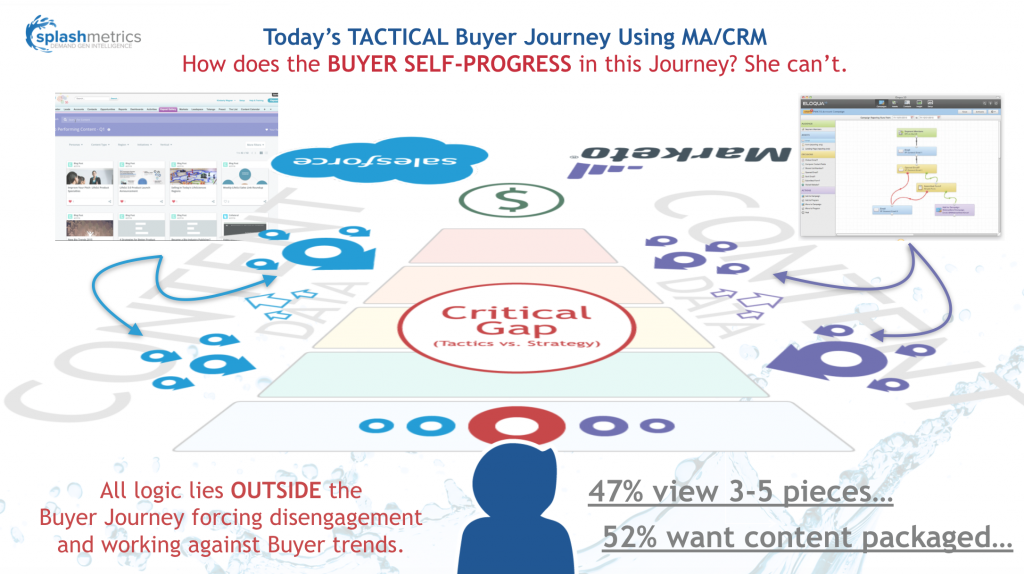
In most cases, she can’t go anywhere because that CTA in the eBook itself is not aligned with the tactical logic in the MA/CRM platforms. In fact, most companies we’ve dealt with actually have CTAs in these various core content assets that actually push the Buyer out of the product track they are in and back to the home page of the website.
This fundamental misalignment in your content strategy means your Buyer actually has to disengage from the Buyer Journey and wait on you to re-engage them with yet another low-odds email. And when we refer back to the statistics above, I don’t think it’s any mystery that this is a fatally flawed model with a critical gap at the very heart of the Buyer Journey.
To be clear, your MA/CRM tactics are absolutely necessary and effective for what they do. But, in the end, they are only as good as the strategically defined and structured content assets and experiences that lie in each stage of your Buyer Journey.
So how do we fix this problem?
You Need a Strategic Backbone
The first thing we need to do is fundamentally change how we think about content. Instead of thinking about assets such as static eBooks, white papers, landing pages, infographics, etc. which are merely served up in succession as “lures” – we need to think about content as a strategic, intelligent, interactive experience for the Buyer; one that provides her what she needs to easily and efficiently continue her journey, and one that provides us the data we need to tailor that package of 3-5 touches to her needs to ensure the best possible outcome for both of us.
This moves us from seeing content as “bubbles” to seeing content as Smart Factories. And this requires much better planning on the front end of any and every Demand Gen initiative you launch.
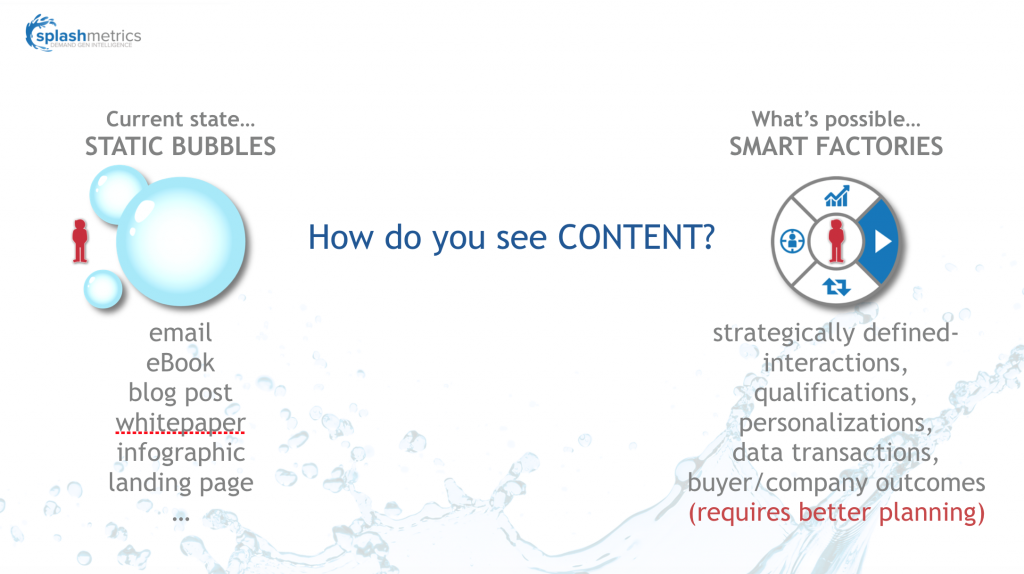
Through our consulting services and our Splashmetrics platform, this is precisely what we do for our customers. We replace that critical gap at the center of the Buyer Journey by ensuring, from the very beginning, a strategic backbone with a fully wired and integrated sequence of Smart Content that always gets the Buyer to the point of sale in 3-5 touches.
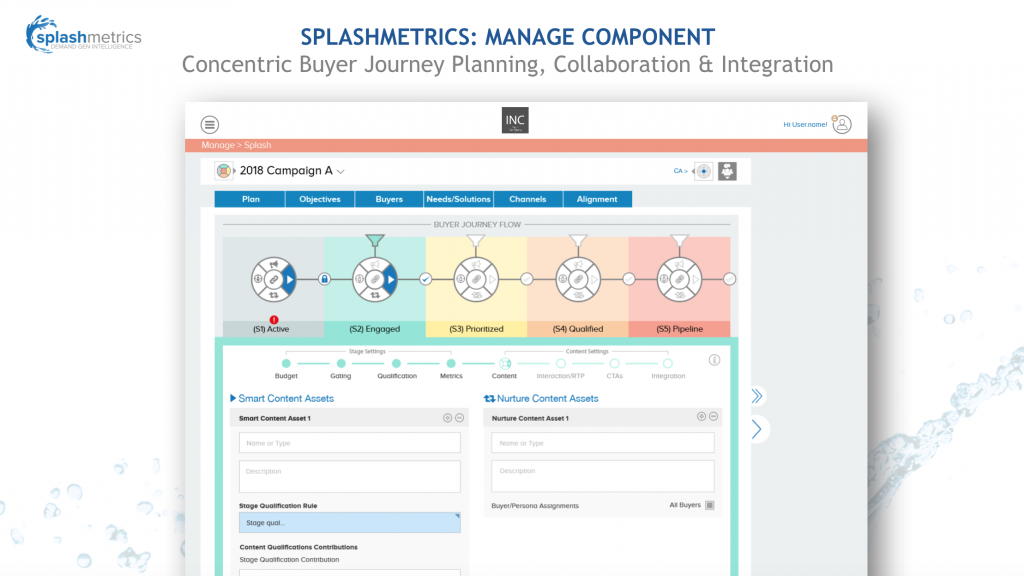
And in this way, Splashmetrics becomes the strategic control center for all your long-term Demand Gen efforts in terms of management, execution, and measurement across the enterprise.
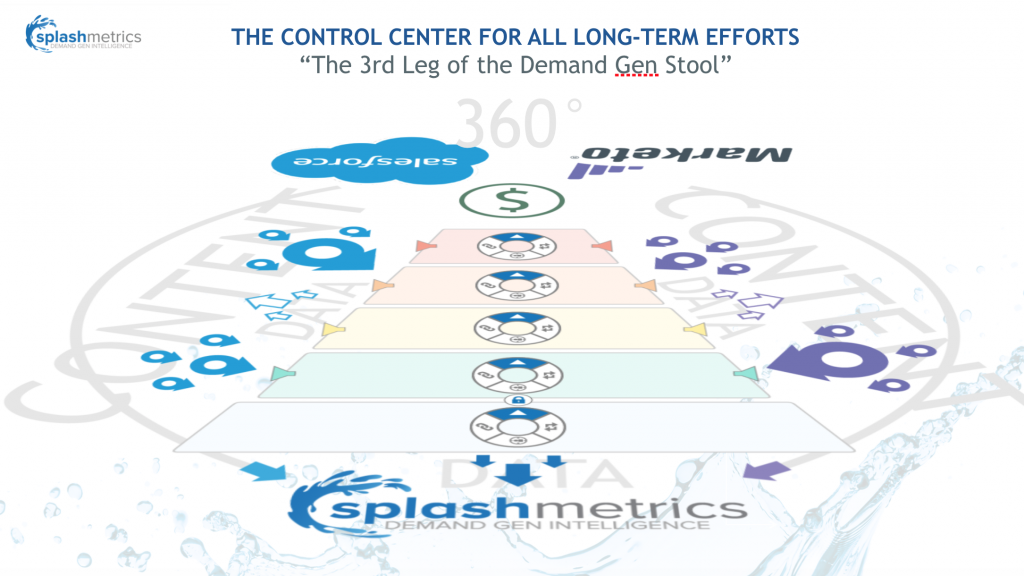
And here’s the cherry on top…when you have this strategic backbone of fully-defined stage qualifications and related Smart Content, your MA/CRM efforts become far more powerful as well. For example, if we have clear alignment as to what level of qualification is required to enter that yellow stage of the Journey, then MA/CRM efforts can focus the tactical targeting on that specific segment of Buyers with the assets in that stage – knowing that when the Buyer enters there they can easily progress while engaged to the point of sale…at any time. There is never an unnecessary loss of engagement anywhere along the Buyer Journey.
In this regard, think of Splashmetrics as the planning, management, and measurement tool that sits at the feet of the Buyer and informs all of your downstream Demand Gen efforts to ensure a package of powerful, strategic Smart Content that seamlessly integrated with your MA/CRM tactics to ensure the best possible outcome and ROI.
Interested in learning more? Give us a shout and let’s break burrito and discuss how we can work together to make your Demand Gen efforts far more powerful.


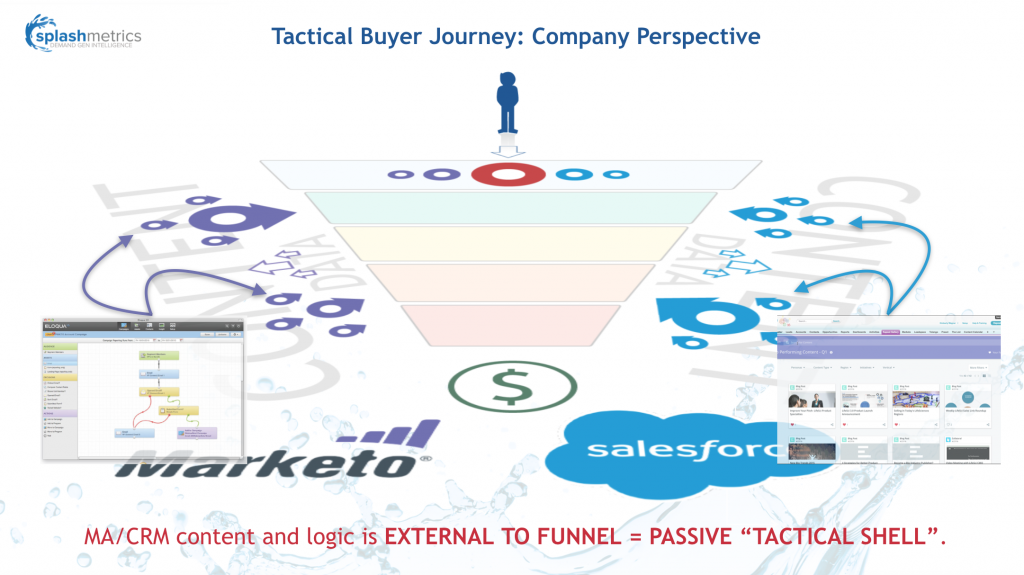
Leave A Comment